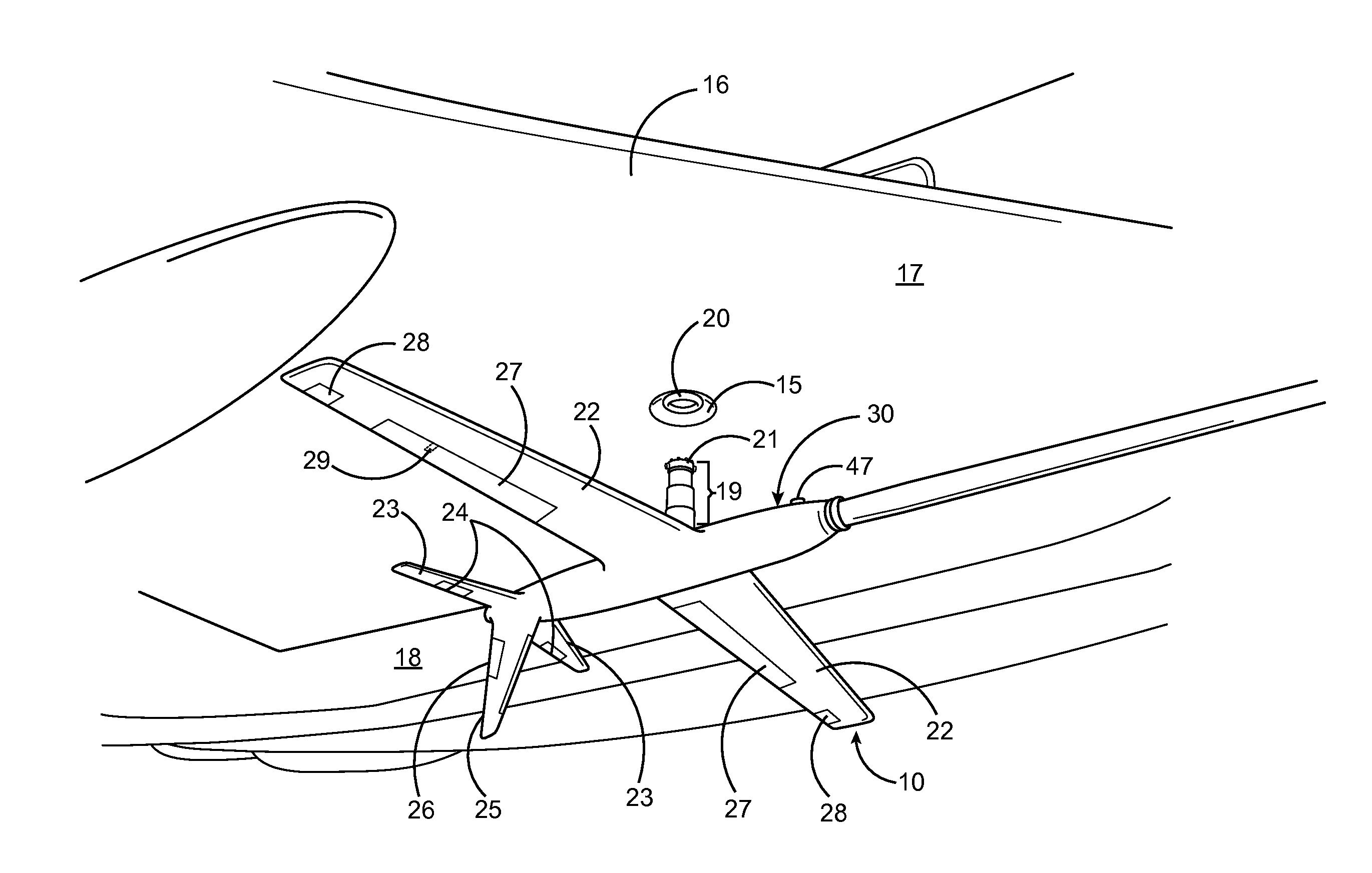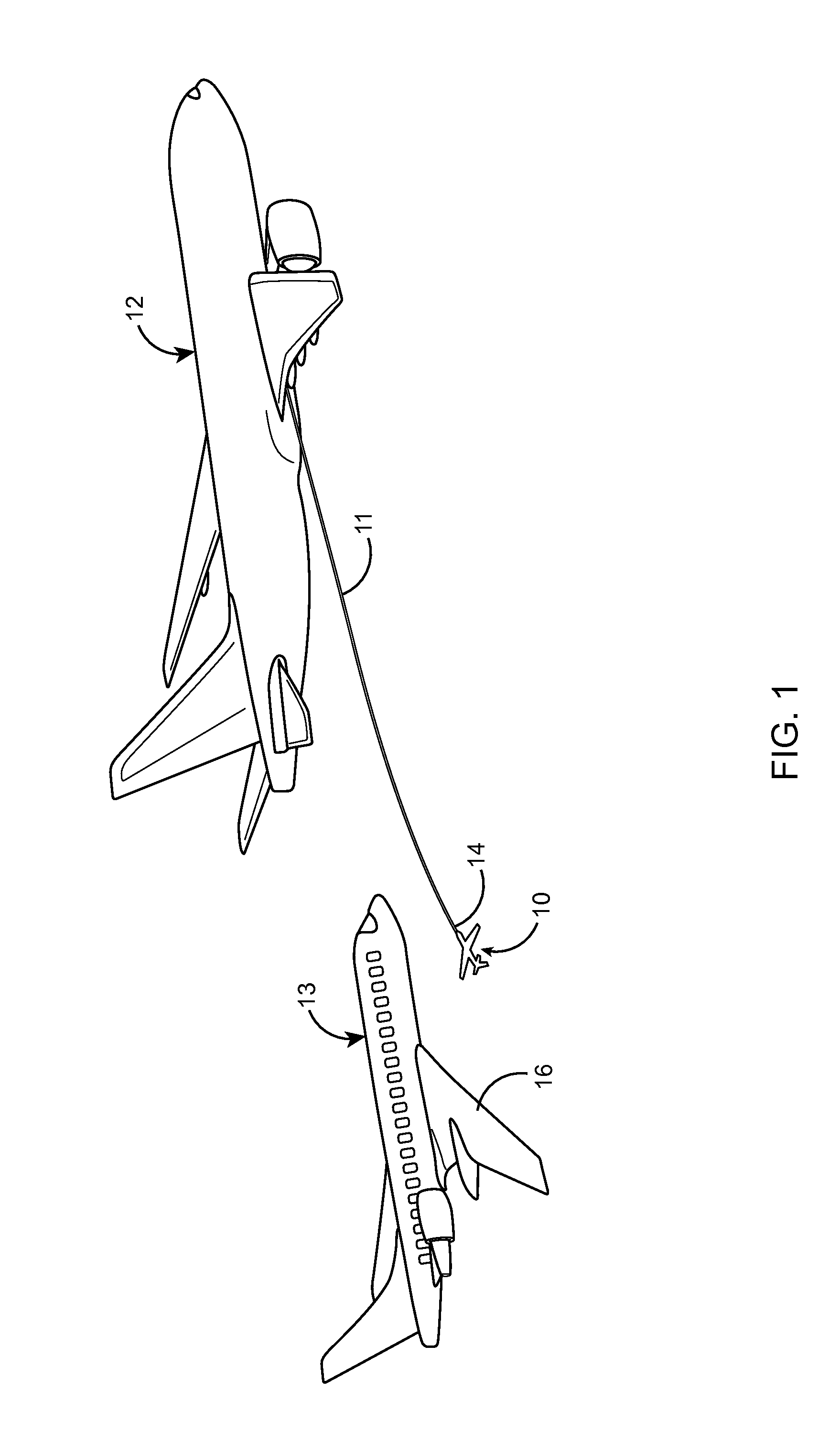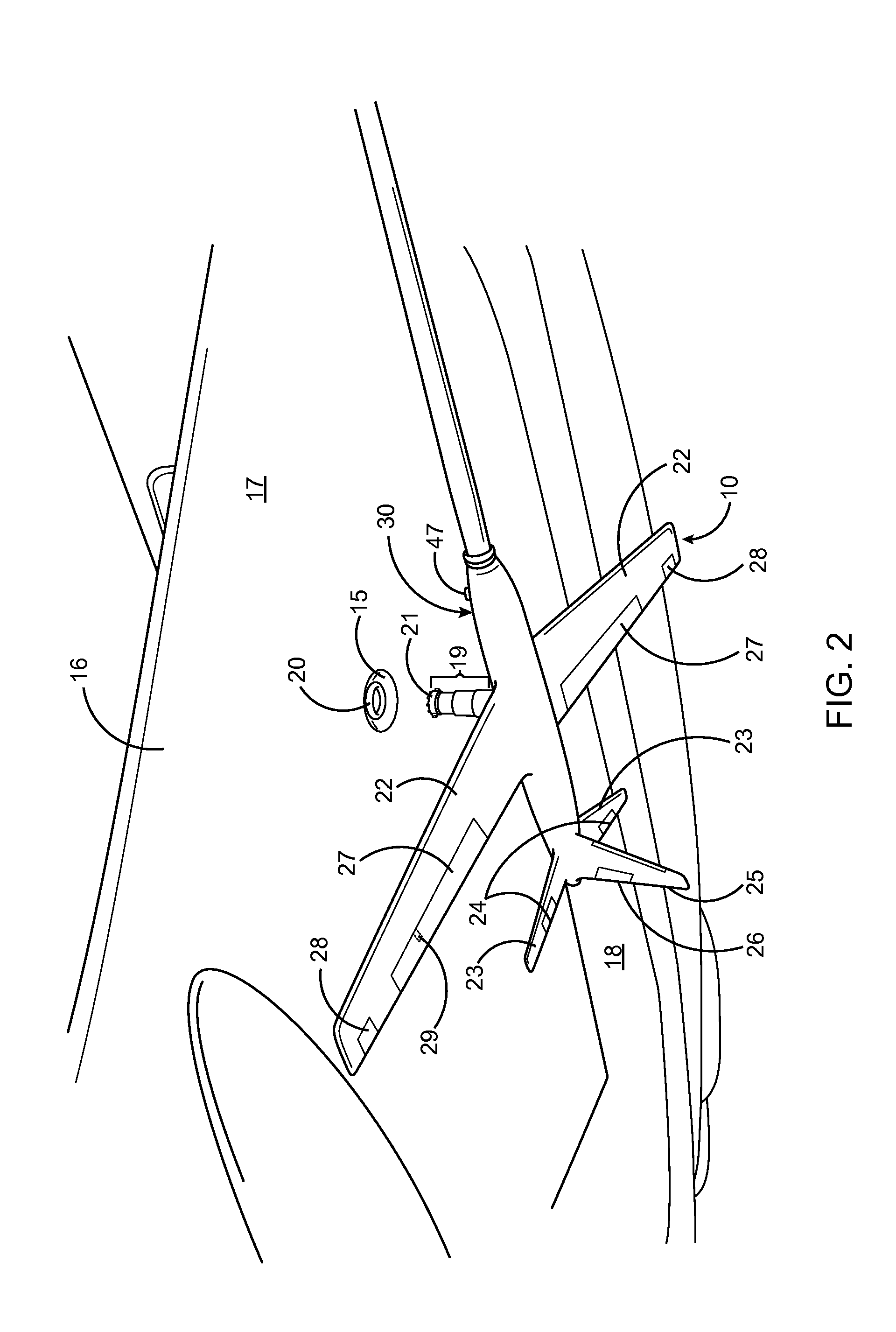Aerial refueling navigable device, system and method
a technology of navigable devices and aircraft, applied in the field of aviation, can solve the problems of increasing the difficulty of larger and less maneuverable planes, if even possible, and insufficient and/or practical solutions for aerial refueling of commercial aircraft, and achieves the effects of reducing drag effects, facilitating attaching, and reducing the cross-sectional area of the hose of the fuel-transmitting medium
- Summary
- Abstract
- Description
- Claims
- Application Information
AI Technical Summary
Benefits of technology
Problems solved by technology
Method used
Image
Examples
Embodiment Construction
[0031]“Fueling port,”“fuel port,” and “refueling port” may all be used interchangeably and are defined herein as an area comprising a fuel inlet for receiving the connecting means of the navigable unit. “Controllable” is also defined to include “manipulable.”
[0032]Turning to the drawings, FIG. 1 illustrates a navigable flying probe unit 10 carrying a fuel transmitting medium 11 from a fuel-giving plane 12 to a fuel-receiving plane 13, and also a method of aerial refueling comprising trailing said fuel-transmitting medium 11 from the fuel-giving plane 12, and maneuvering it 11 through the air towards the wing 16 of the fuel-receiving plane 13 using, on one end 14 of the fuel-transmitting medium 11, the navigable unit 10, and (as also shown in FIG. 2) by utilizing the navigable unit's 10 controllable aerodynamic surfaces 18 to precisely position the navigable unit 10 to the refueling port 15 located on the surface 17 of the wing 16 of the fuel-receiving plane 13. Then, as shown in FIG...
PUM
 Login to View More
Login to View More Abstract
Description
Claims
Application Information
 Login to View More
Login to View More - R&D
- Intellectual Property
- Life Sciences
- Materials
- Tech Scout
- Unparalleled Data Quality
- Higher Quality Content
- 60% Fewer Hallucinations
Browse by: Latest US Patents, China's latest patents, Technical Efficacy Thesaurus, Application Domain, Technology Topic, Popular Technical Reports.
© 2025 PatSnap. All rights reserved.Legal|Privacy policy|Modern Slavery Act Transparency Statement|Sitemap|About US| Contact US: help@patsnap.com



